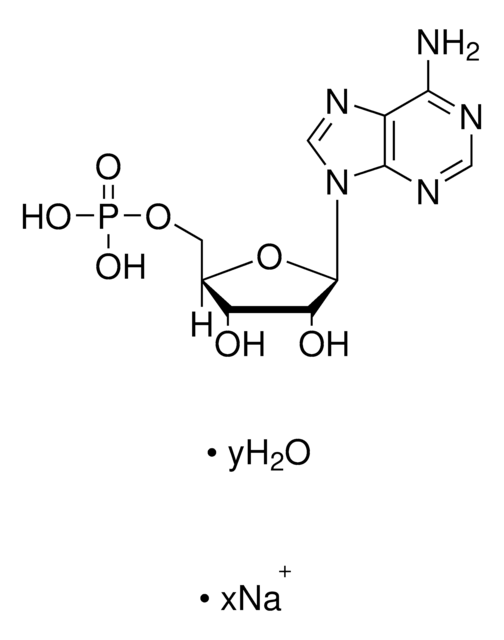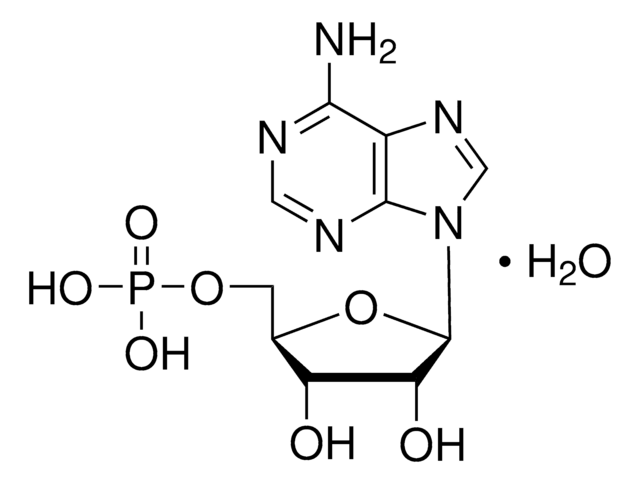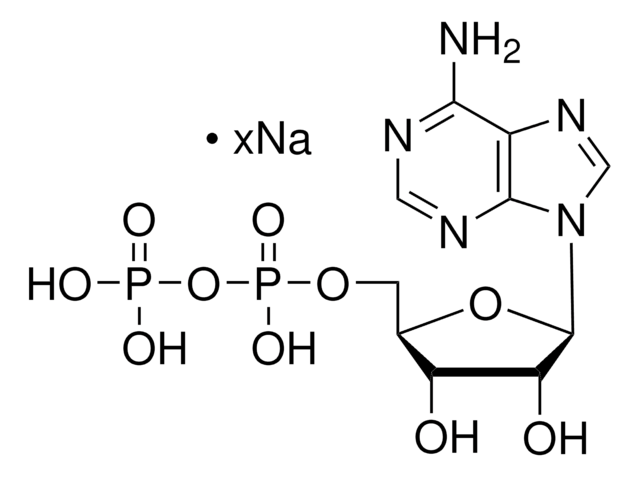A4418
Sulfate d'ammonium
for molecular biology, ≥99.0%
Synonyme(s) :
Mascagnite
About This Item
Produits recommandés
Qualité
for molecular biology
Niveau de qualité
Pureté
≥99.0%
Forme
powder
Technique(s)
affinity binding assay: suitable
protein purification: suitable
Impuretés
≤0.005% Insolubles
pH
5.0-6 (25 °C, 132 g/L)
Pf
>280 °C (dec.) (lit.)
Solubilité
H2O: 0.667 g/mL
Densité
1.77 g/mL at 25 °C (lit.)
Traces d'anions
chloride (Cl-): ≤5 ppm
Traces de cations
Cu: ≤5 ppm
Fe: ≤5 ppm
Zn: ≤5 ppm
heavy metals (as Pb): ≤2 ppm
Absorption
≤0.025 at 280 at 1 M
≤0.03 at 260 at 1 M
Adéquation
suitable for flow cytometry
suitable for molecular biology
Application(s)
metabolomics
microbiology
Activité étrangère
DNase, RNase, and protease, none detected
Chaîne SMILES
N.N.OS(O)(=O)=O
InChI
1S/2H3N.H2O4S/c;;1-5(2,3)4/h2*1H3;(H2,1,2,3,4)
Clé InChI
BFNBIHQBYMNNAN-UHFFFAOYSA-N
Vous recherchez des produits similaires ? Visite Guide de comparaison des produits
Description générale
Application
- pour préparer du colorant de Coomassie colloïdal Blue Silver pour les protéines.
- pour précipiter une toxine similaire à la shigatoxine à partir d'un surnageant de culture.
- pour précipiter des particules virales à partir d'un surnageant de culture.
Caractéristiques et avantages
- Métaux lourds (exprimés en Pb) : ≤ 2 ppm.
- Produit exempt de DNases, RNases et protéases.
Autres remarques
Produit comparable
Produit(s) apparenté(s)
Code de la classe de stockage
11 - Combustible Solids
Classe de danger pour l'eau (WGK)
WGK 1
Point d'éclair (°F)
Not applicable
Point d'éclair (°C)
Not applicable
Équipement de protection individuelle
Eyeshields, Gloves, type N95 (US)
Certificats d'analyse (COA)
Recherchez un Certificats d'analyse (COA) en saisissant le numéro de lot du produit. Les numéros de lot figurent sur l'étiquette du produit après les mots "Lot" ou "Batch".
Déjà en possession de ce produit ?
Retrouvez la documentation relative aux produits que vous avez récemment achetés dans la Bibliothèque de documents.
Les clients ont également consulté
Notre équipe de scientifiques dispose d'une expérience dans tous les secteurs de la recherche, notamment en sciences de la vie, science des matériaux, synthèse chimique, chromatographie, analyse et dans de nombreux autres domaines..
Contacter notre Service technique




